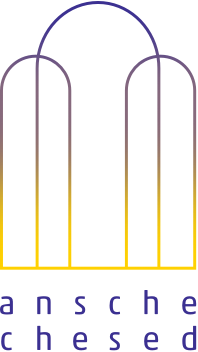The recitation of קריאת שמע/Keriat Shema is built from three bible passages:
- Deuteronomy 6:4-9, the Shema+Ve’ahavta itself;
- Deuteronomy 11: 13-21, which begins והיה אם שמוע/Vehaya im shamoa; and
- Numbers 15:37-41, which includes the command of wearing tzitzit and the memorial of the Exodus.
Why do the texts come in this order? According to Mishna Berakhot 2.2, the two passages from Deuteronomy express different religious themes.
Shema+Ve’ahavta express God’s one-ness, or unity, and the consequent commands to love God and study and teach Torah. The religious attitude of this passage is inward: when you daven this section you reflect theologically, respond emotionally, and search intellectually.
Vehaya im shamoa expands those demands to a wider frame encompassing the commandments generally – both those that demand our hearts and minds, and those acts of devotion, ethics and social justice that shape a Jew’s life. When you daven this paragraph, you hear its demands that we “heed my commandments … to love the Lord your God ולעבדו/u’leovdo, and to serve God with all your hearts and souls.” This religious attitude is both inward and outward. “It’s important that you love God,” the passage addresses us. “Now, what are you going to do about it? How are you going to make a spiritual love into a practice of divine service, worshiping, celebrating at special times, cultivating ethical virtues and establishing a just society.”
The Mishna expresses the relationship between these two paragraphs in a phrase that has entered Jewish common parlance:
אמר רבי יהושע בן קרחה, למה קדמה “שמע” ל”והיה אם שמוע”? אלא כדי שיקבל עליו עול מלכות שמיים תחילה, ואחר כך יקבל עליו עול מצוות
“Said Rabbi Joshua b. Korcha: Why does Shema precede Ve’haya im shamoa? So that we may accept upon ourselves the yoke of divine majesty [ol malkhut shamayim] first, and afterwards the yoke of the commandments [ol mitzvot].”
This order communicates something important about Jewish spirituality. This is a religion, after all, not a secular culture, though it also has secular elements. Begin by reflecting on the One God, on finding faith, in using your emotions and mind. A relationship with God is the essential and core commitment that makes Jewish culture cohere. God is necessary. But not sufficient. Faith commitments bring us to the commandments, which turn abstractions and values into real behaviors. You might think of the first as the yoke of heaven, and the second as how to bear that yoke on earth.
Nowadays – often in modern Orthodox circles and sometimes at the more traditional end of Conservative Judaism – one hears a religiously behaviorist rhetoric. What matters is what you do, not what you think. Just keep Shabbat. Just put on your tefillin. And there is something to that. Much classical theological language is a challenge for modern people or is even impossible to accept. So behaving like a Jew, with all your doubts, has its attractions.
Still, I’m sticking with R. Joshua b. Korcha, and his teaching that when we daven Shema Israel we begin with theology and develop into behavior. We need both.
The Jerusalem Talmud [Berakhot 2.1] expresses this view well: “the first paragraph addresses theory, the second practice.”




